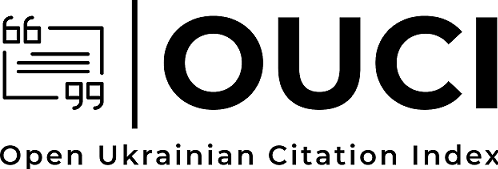З історії створення та діяльності українських таборових організацій у Вецлярі, Німеччина (1917 — початок 1918 рр.)
DOI:
https://doi.org/10.28925/2524-0757.2023.22Ключові слова:
полонені українці, товариство, громадський активізм, табір Вецляр, НімеччинаАнотація
У статті відтворено історію створення та деякі аспекти діяльності таборових організацій у Вецлярі (Німеччина) впродовж 1917 — початку 1918 рр. Кожна з них («Воля», «Товариство старших бараків ім. І. Мазепи», «Українське Мистецтво», «Сільський Господар», «Запомогово-роздавочний комітет») внесла свою лепту в процес громадсько-національного освідомлення полонених українців насамперед завдяки їх залученню до життя загальнотаборової громади. Отримавши початкову освіту в таборовій школі, її учні воліли розширювати власні знання, набували досвіду громадської роботи, засвоювали нові стандарти колегіального вирішення своїх нагальних проблем у таборовому вимірі. Наголошується, що така діяльність стала для багатьох таборян справжньою школою особистісного становлення, прищепивши їм основи демократичних цінностей, та виплекала у подальшому в декотрого з полонених бажання взяти до рук зброю і стати на захист новоствореної Української Народної Республіки у двобої з більшовицькою Москвою.
Завантаження
Посилання
Kryvosheieva, L. M. (2009). Natsionalno-prosvitnia diialnist Soiuzu vyzvolennia Ukrainy v taborakh viiskovopolonenykh ukraintsiv (1914–1918 rr.) [National Educational Activities of the Union for the Liberation of Ukraine in the Camps of Ukrainian Prisoners of War (1914–1918)]. (Candidate’s thesis). Zaporizhzhia [in Ukrainian].
Sribnyak, I. (1998). Tabir polonenykh ukraintsiv u Wetzlari (Nimechchyna) u 1915–1917 rr. Visnyk Kyivskoho derzhavnoho linhvistychnoho universytetu, Seriia: Istoriia, ekonomika, filosofiia, 2, 38–57 [in Ukrainian].
Sribnyak, I. (1999). Poloneni ukraintsi v Avstro-Uhorshchyni ta Nimechchyni (1914–1920 rr.). Kyiv [in Ukrainian].
Sribnyak, I. (2015). Stvorennia ta diialnist Muzychno-dramatychnoho tovarystva imeni M. Lysenka v tabori Wetzlar (Nimechchyna) u 1915–1916 rr. Drynovskyi zbirnyk, 8, 315–321 [in Ukrainian].
Sribnyak, I. & Paliyenko, M. (2021). Tovarystvo “Silskyi Hospodar” u tabori polonenykh ukraintsiv Wetzlar (Nimechchyna), 1916–1917 rr.: do istorii stvorennia ta diialnosti. Humanitarni studii: istoriia i pedahohika — Humanitarian Studies: History and Pedagogy, 2, 43–55 [in Ukrainian].
Sribnyak, I. & Paliyenko, M. (2022). Z istorii kooperatyvnoho rukhu v tabori polonenykh ukraintsiv Wetzlar, Nimechchyna: stvorennia ta diialnist spilky “Chainia” (hruden 1915–1916 rr.). Kyivski istorychni studiyi — Kyiv Historical Studies, 1(14), 30–38 [in Ukrainian].
Sribnyak, I. (2023). Tovarystvo «Prosvitna hromada im. Mykhaila Drahomanova» u tabori polonenykh ukraintsiv Wetzlar, Nimechchyna, 1917 — pochatok 1918 rr. (za materialamy chasopysu “Hromadska Dumka”). Osvitolohichnyy dyskurs — Educological Discourse, 42(3), 7–22 [in Ukrainian].
Rehmer, C. (1994). Das Ukrainerlager Wetzlar-Büblingshausen (1915–1918). Ein besonderes Lager? Mitteilungen des Wetzlarer Geschichtsvereins, 37, 77–116 [in German].
Runzheimer, J. (1994). «...Damit alle an uns erinnert werden»! Das ukrainische Gefangenenlager in Wetzlar Heimat an Lahn und Dill, 284, 2–3 [in German].
Опубліковано
Як цитувати
Номер
Розділ
Ліцензія
Авторське право (c) 2023 Мачей Кротофіл , Ігор Срібняк, Наталія Яковенко

Ця робота ліцензується відповідно до Creative Commons Attribution-NonCommercial-ShareAlike 4.0 International License.
Автори, які публікуються у цьому журналі, залишають за собою право на авторство своєї роботи та передають журналу право першої публікації цієї роботи на умовах публічної ліцензії Creative Commons: Attribution-NonCommercial-ShareAlike 4.0 International (CC BY-NC-SA 4.0), котра дозволяє іншим особам вільно розповсюджувати опубліковану роботу з обов'язковим посиланням на авторів оригінальної роботи та першу публікацію роботи у цьому журналі.














